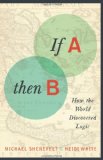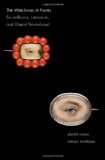new book – ‘How Things Shape the Mind: A Theory of Material Engagement’ by Lambros Malafouris
July 21, 2013
How Things Shape the Mind: A Theory of Material Engagement by Lambros Malafouris (MIT Press, 2013)
Book description from the publisher:
An increasingly influential school of thought in cognitive science views the mind as embodied, extended, and distributed, rather than brain-bound, “all in the head.” This shift in perspective raises important questions about the relationship between cognition and material culture, posing major challenges for philosophy, cognitive science, archaeology, and anthropology. In How Things Shape the Mind, Lambros Malafouris proposes a cross-disciplinary analytical framework for investigating the different ways in which things have become cognitive extensions of the human body. Using a variety of examples and case studies, he considers how those ways might have changed from earliest prehistory to the present. Malafouris’s Material Engagement Theory adds materiality — the world of things, artifacts, and material signs — into the cognitive equation definitively. His account not only questions conventional intuitions about the boundaries and location of the human mind but also suggests that we rethink classical archaeological assumptions about human cognitive evolution.
Arguing that the understanding of human cognition is essentially interlocked with the study of the technical mediations that constitute the central nodes of a materially extended and distributed human mind, Malafouris offers a series of archaeological and anthropological case studies — from Stone Age tools to the modern potter’s wheel — to test his theory. How do things shape the mind? Considering the implications of the seemingly uniquely human predisposition to reconfigure our bodies and our senses by using tools and material culture, Malafouris adds a fresh perspective on a foundational issue in the study of human cognition.
See also: Author’s webpage







